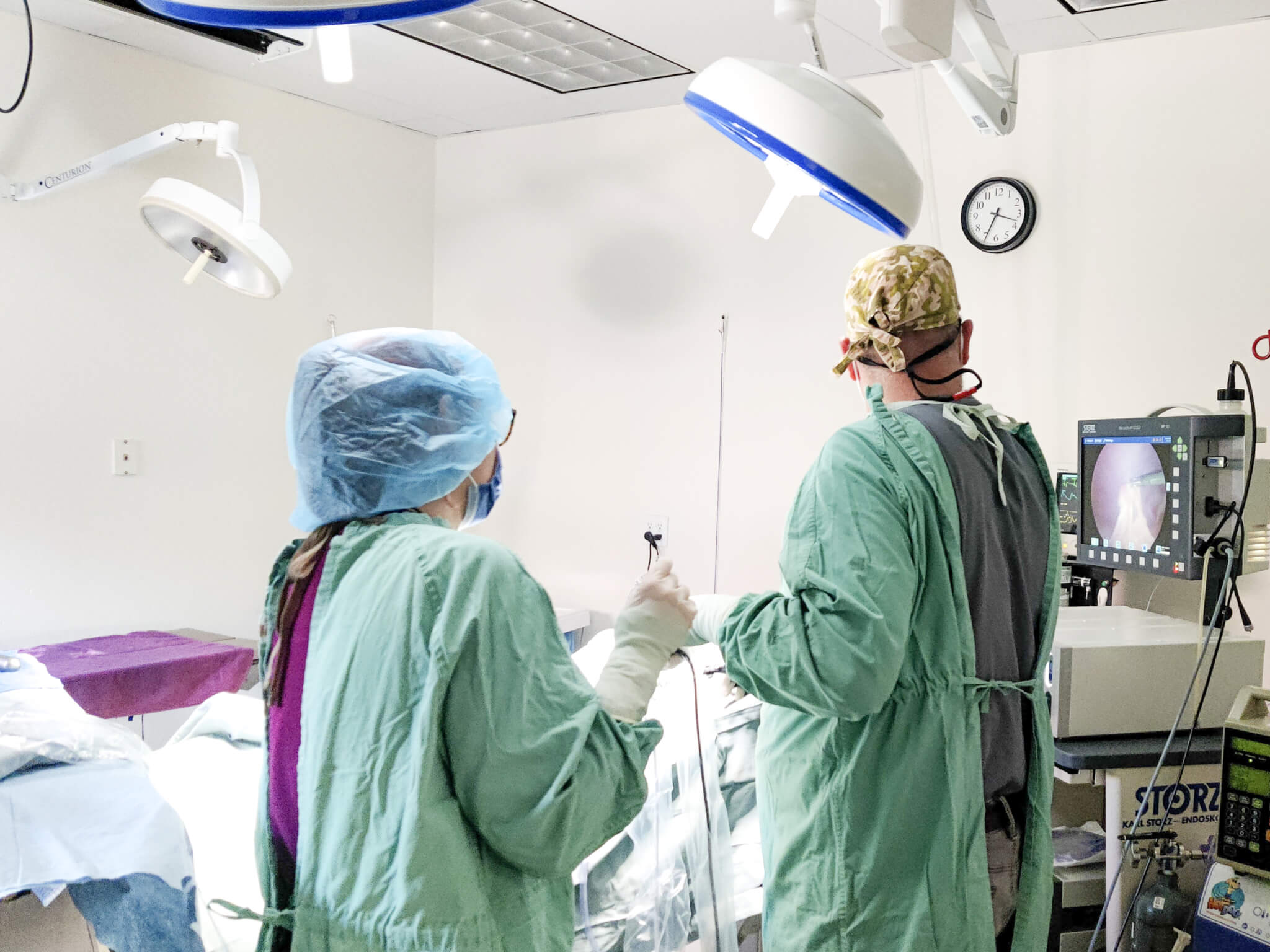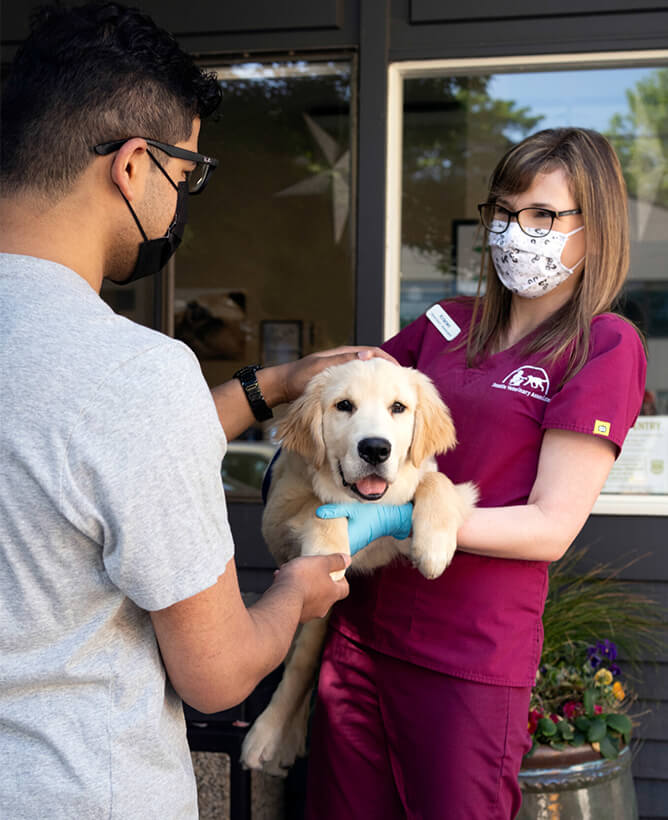
Laparoscopic spay is a new spaying option for some dogs.
Spaying your female dog is an important step in responsible pet ownership, and laparoscopic ovariectomies are a valuable advancement in this procedure.
You likely know someone who has had, or perhaps yourself have had, a surgical procedure performed with laparoscopy and had a quick recovery afterwards. Laparoscopic surgical techniques are now being used in the veterinary field with similar benefits. A great example of this is a laparoscopic ovariectomy.
How is Laparoscopic Spay done?
Laparoscopic ovariectomy is a minimally invasive approach to spaying dogs. Two small incisions (approximately 5-10mm long) are made along the dog’s abdominal midline. One incision is used to pass the videoscope into the abdomen, while the other is for the surgical instruments. The abdomen is inflated with carbon dioxide to aid in viewing of the abdominal organs and blood vessels. A special device is used to seal the blood vessels and tissue around the ovaries so that they can then be removed. The incisions are then sutured closed.
Are there any dogs that cannot be spayed using your laparoscope?
Due to the size of our laparoscopic tools and the incision size needed, this kind of spay is only performed on dogs who weigh over 25 pounds.
What are the benefits of this procedure?
Spaying your dog laparoscopically holds many benefits compared to the traditional procedure. Visibility is improved with the videoscope, which can magnify and provide enhanced lighting. Compared to a traditional spay, where tissues connecting the ovaries to the body wall are blindly torn, the videoscope allows a direct view of the ovaries so that these ligaments are not torn. This, in conjunction with a smaller incision size, lowers the overall tissue trauma and pain level experienced by your dog.
Although it is uncommon, there is a possibility that the surgeon may need to convert to a traditional spay at the time of the procedure. This can be due to a dog having abnormal anatomy, poor viewing conditions, too much bleeding, or even the rare equipment malfunction. In these unlikely situations, the veterinarian performing the spay will elect the procedure that is safest for your dog.

Ravenna Animal Hospital
Call/Text: 206-522-2114
Fax: 206-522-0953
